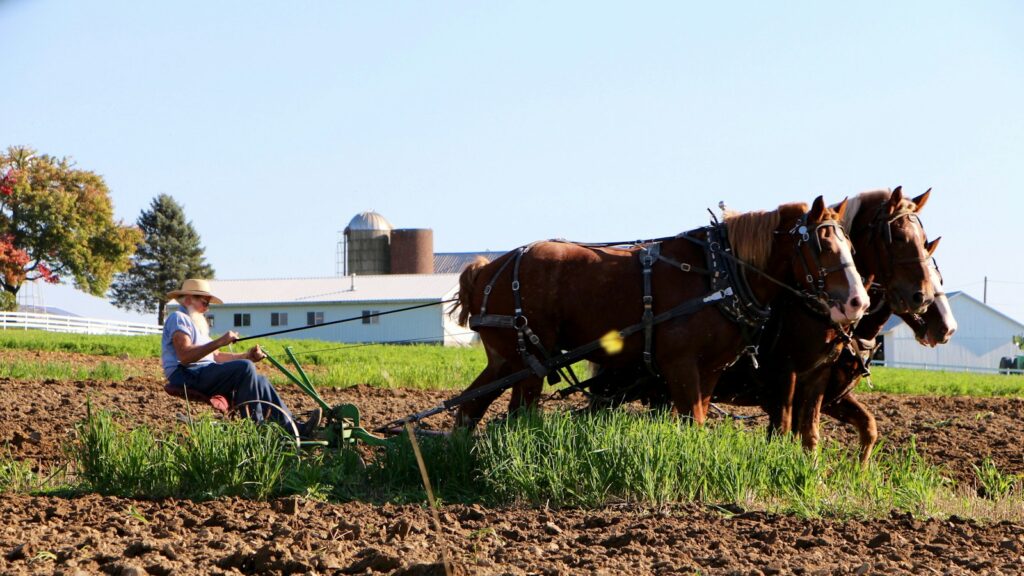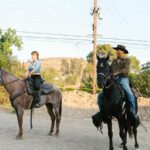In an era dominated by diesel engines and computerized machinery, a surprising shift is occurring across farmlands worldwide. Draft horses—those magnificent, powerful equines that once pulled plows before tractors existed—are making a notable resurgence in modern agriculture. This revival isn’t merely nostalgia or a rejection of technology, but rather represents a thoughtful reconsideration of sustainability, economics, and connection to the land. As fuel prices climb and environmental concerns mount, these gentle giants are once again finding purpose in the fields, offering farmers an alternative that bridges traditional wisdom with contemporary sustainable practices.
The Historical Significance of Draft Horses
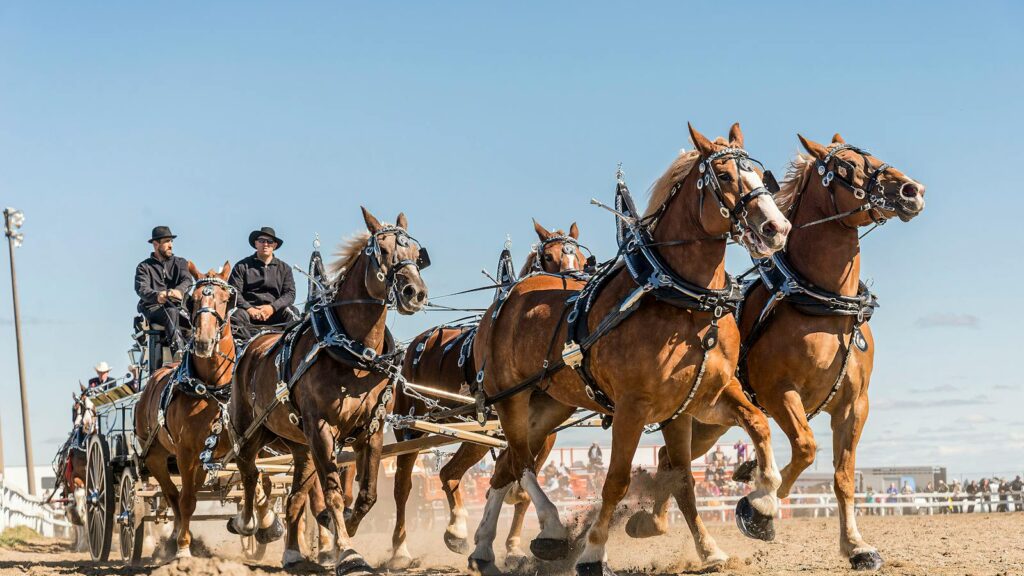
For centuries, draft horses were the primary power source for agricultural operations across the globe, forming the backbone of farming until the early 20th century. Breeds like Belgians, Percherons, Clydesdales, and Shires were deliberately developed over generations to combine enormous strength with docile temperaments perfect for farm work. These majestic animals helped clear forests, plow fields, plant and harvest crops, and transport goods to market—essentially building modern civilization before the advent of fossil fuels. Their decline began dramatically with the mass production of tractors following World War I, when mechanical power rapidly replaced animal power in most developed countries. By the mid-20th century, what had been millions of working draft horses had dwindled to small numbers maintained primarily by traditionalist communities like the Amish and hobbyists interested in preserving heritage skills.
Environmental Benefits of Horse-Powered Farming
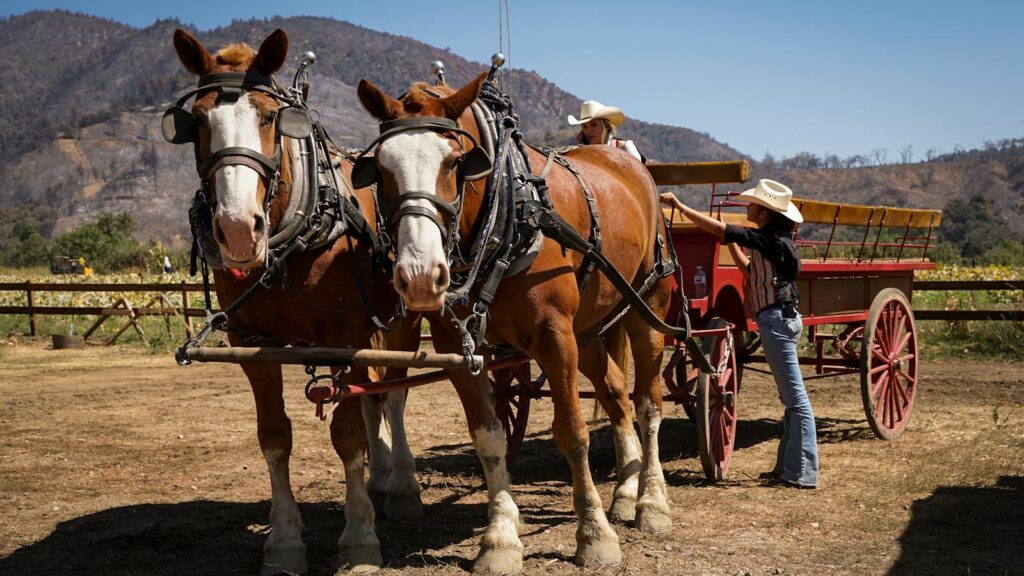
Perhaps the most compelling reason for the draft horse comeback is their minimal environmental footprint compared to conventional farm equipment. Unlike tractors, horses produce no carbon emissions during operation, making them a truly renewable energy source in agriculture. Their waste returns nutrients directly to the soil as valuable manure, completing a natural cycle rather than depleting resources. Draft horses cause significantly less soil compaction than heavy machinery, preserving soil structure and reducing issues like erosion and water runoff that plague many modern farms. Additionally, fields worked by horses often maintain greater biodiversity, as their slow pace and less aggressive impact preserves habitat for beneficial insects, birds, and soil microorganisms that contribute to overall ecosystem health. The environmental calculation becomes increasingly favorable for horses as more farmers recognize the true ecological cost of conventional mechanized agriculture.
Economic Considerations in Horse-Powered Farming
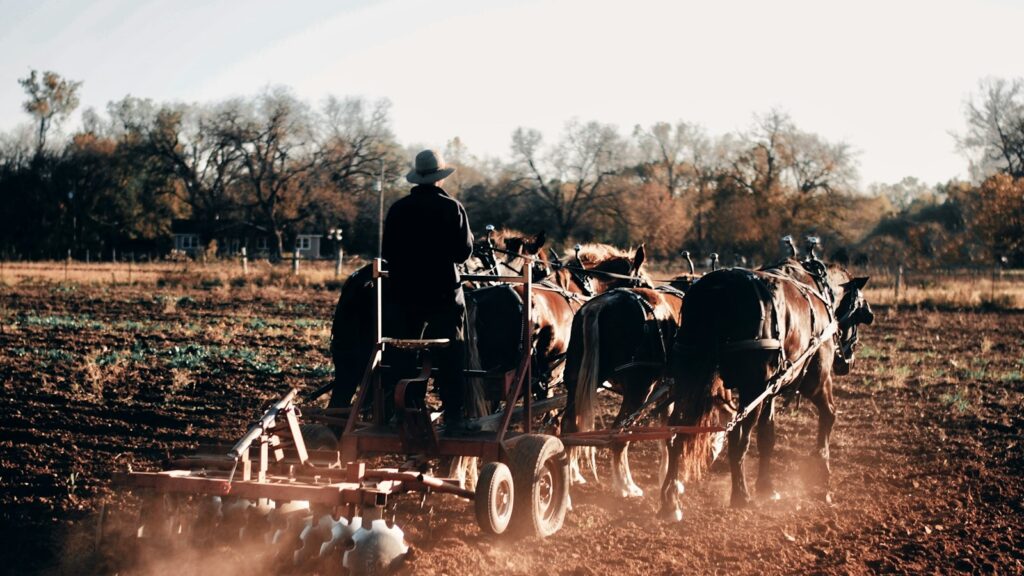
Contrary to popular assumption, horse-powered farming can be economically viable, particularly for small to medium-sized operations. The initial investment in quality draft horses—typically ranging from $3,000 to $5,000 per animal—compares favorably to the five or six-figure price tags attached to new farm tractors and implements. Horses, unlike machinery, appreciate in value as they mature and gain training, and they reproduce, potentially creating additional assets rather than depreciating like mechanical equipment. Maintenance costs for horses (feed, veterinary care, shoeing) remain relatively stable, while farm equipment requires increasingly expensive parts, specialized repairs, and faces constant fuel price fluctuations. For operations under 100 acres, several studies have shown that horse-powered systems can achieve comparable or even superior financial outcomes to tractor-dependent systems, particularly when factoring in the saved costs of gym memberships that many tractor farmers require to stay physically healthy!
The Self-Sufficiency Factor
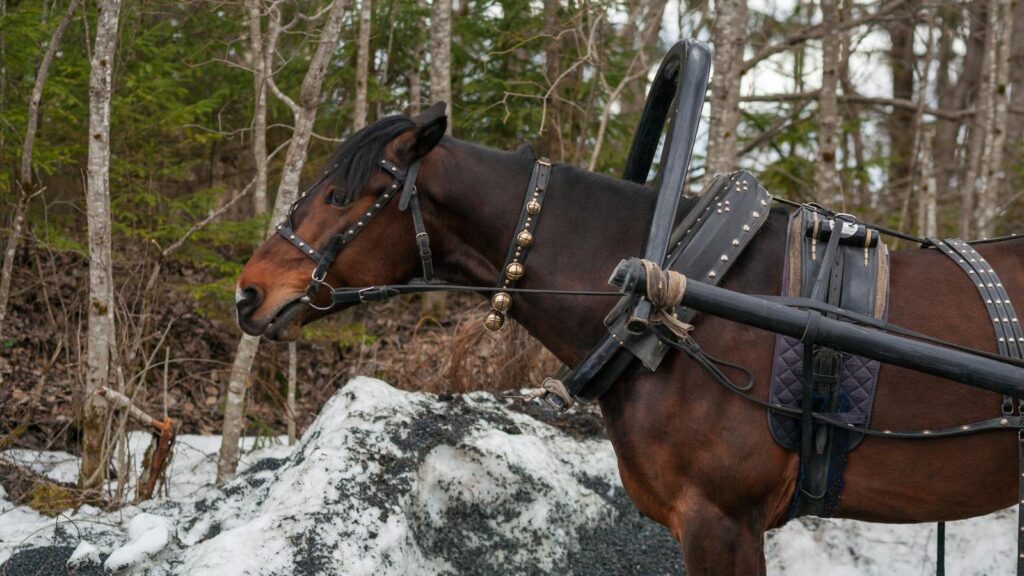
One of the most appealing aspects of draft horses for the modern sustainable farmer is the remarkable self-sufficiency they offer. While tractors depend on complex global supply chains for fuel, parts, and specialized maintenance, horses can operate on locally-grown feed and reproduce themselves through thoughtful breeding programs. This independence from industrial systems provides farmers with resilience against supply chain disruptions, fuel shortages, and economic volatility. During extreme weather events that might render roads impassable for fuel deliveries, horses continue working provided they have adequate forage. The self-replacing nature of horses stands in stark contrast to the planned obsolescence of modern farm equipment, where software updates and proprietary systems often force farmers into constant upgrade cycles. For many sustainability-minded farmers, this autonomy represents freedom from corporate agriculture’s increasingly restrictive technological treadmill.
Innovative Hybrid Approaches

The modern draft horse renaissance isn’t about completely abandoning technology, but rather integrating the best of both worlds. Progressive horse-powered farms often employ what experts call “hybrid vigor” approaches, using horses for tasks where they excel while reserving fossil-fuel powered equipment for specialized applications. For instance, a farmer might use horses for cultivation, planting, and light harvesting, but bring in a diesel-powered combine for the main grain harvest when timing and labor efficiency become critical. Modern horse-drawn equipment has evolved significantly, incorporating precision seed placement mechanisms, ergonomic designs, and innovative materials that make them far more efficient than their historical counterparts. Some forward-thinking manufacturers now produce implement systems specifically designed to convert between horse and tractor power, giving farmers maximum flexibility to respond to changing conditions and needs throughout the growing season.
Soil Health and Regenerative Agriculture
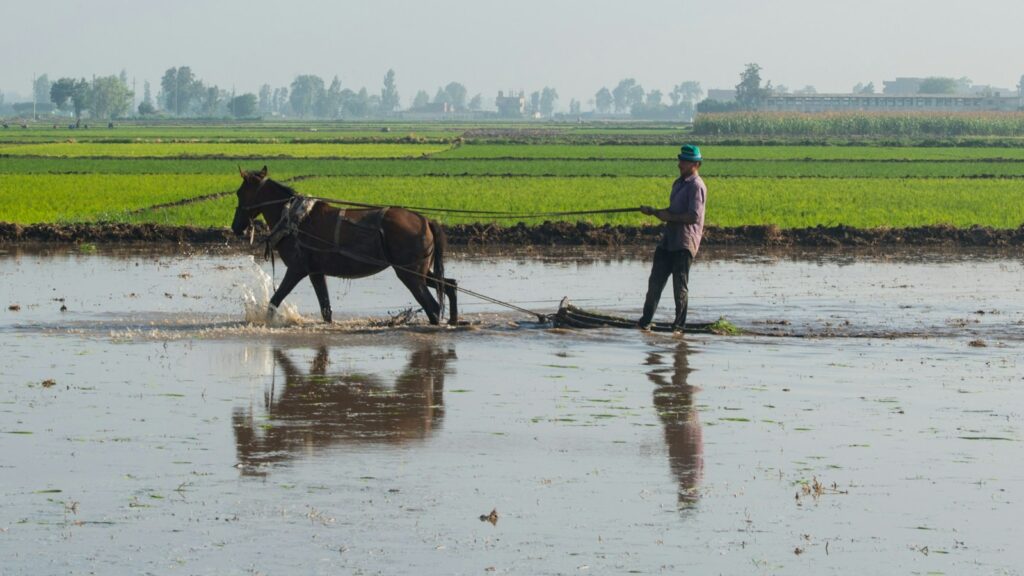
The regenerative agriculture movement has embraced draft horses as partners in building healthier soil systems. The horses’ lighter footprint prevents the destruction of soil structure and mycorrhizal networks that occur under heavy mechanized traffic. Draft horse teams allow farmers to practice ultra-precise cultivation techniques that minimize soil disturbance while effectively managing weeds. When integrated with cover cropping and rotational grazing systems, horse-powered operations often achieve remarkable improvements in soil organic matter, water retention, and biological activity. Research from sustainable agriculture centers has documented that horse-worked fields frequently show higher earthworm counts, greater microbial diversity, and improved carbon sequestration compared to conventionally farmed counterparts. For farmers committed to building rather than depleting their soil, draft horses offer a harmonious power source that aligns perfectly with their regenerative objectives.
Skills Preservation and Knowledge Transfer
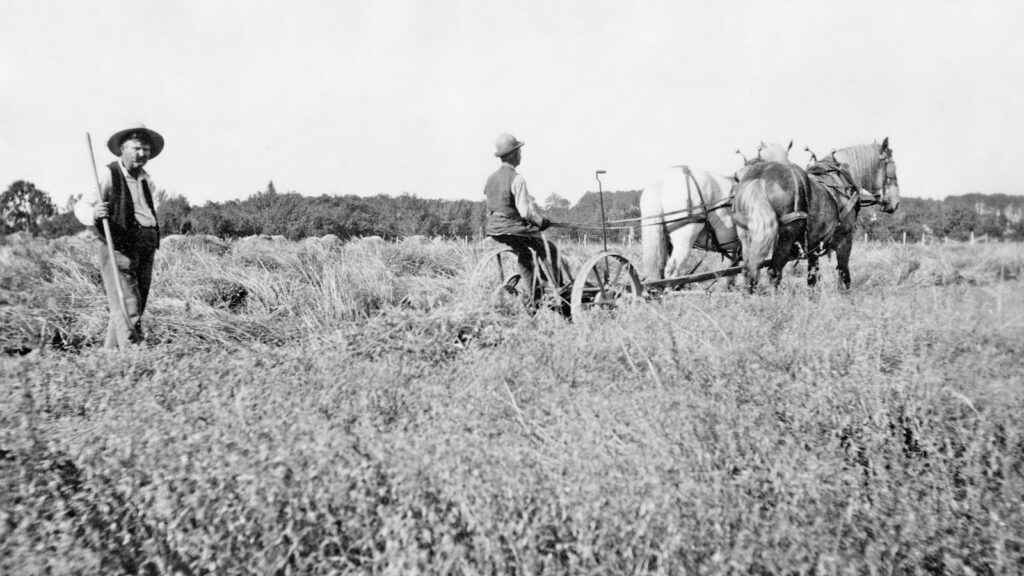
The resurgence of draft horse farming represents more than just an agricultural practice—it embodies the preservation of cultural heritage and intergenerational knowledge. Working with draft animals requires developing skills that connect modern farmers to thousands of years of agricultural tradition, including harness fitting, driving techniques, voice commands, and understanding equine psychology. As interest grows, specialized workshops, apprenticeships, and training programs have emerged to transfer these skills to new generations. Organizations like the Draft Horse Journal, Rural Heritage, and numerous regional draft horse associations provide resources and community connections for newcomers. Many established draft horse farmers have developed structured mentoring programs, recognizing that this knowledge cannot be effectively preserved in books alone but must be transmitted through direct experience and practice. This living knowledge system creates valuable cultural continuity in a farming landscape often characterized by disruption and disconnection.
Community Building and Social Benefits
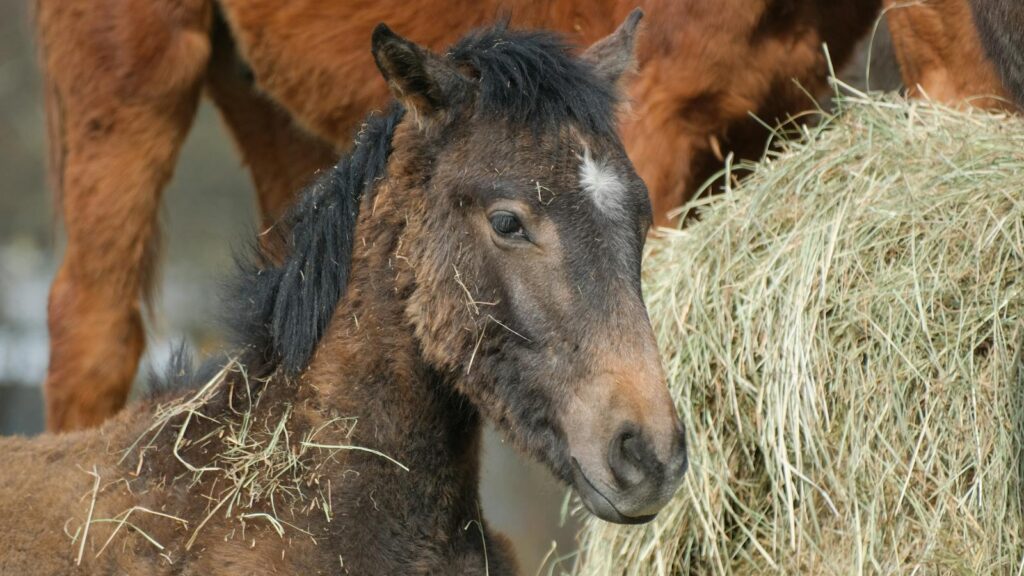
Farms utilizing draft horses often become natural community hubs, attracting neighbors, volunteers, and visitors fascinated by these magnificent animals and traditional skills. This magnetism creates social capital and connection often missing in highly mechanized agricultural settings. Horse-powered farm events like plowing demonstrations, field days, and harvest festivals provide educational opportunities while strengthening community bonds around local agriculture. Many draft horse farmers report increased customer loyalty at farmers markets and CSA programs, as consumers develop emotional connections to farms where food is produced with visibly ethical animal partnerships. The human-scale pace of horse farming also tends to create more employment opportunities than machinery-intensive approaches, potentially helping revitalize rural economies through meaningful agricultural work. These social benefits, while less tangible than fuel savings, represent significant value in building sustainable food systems embedded in healthy communities.
Draft Horses and Scale-Appropriate Technology
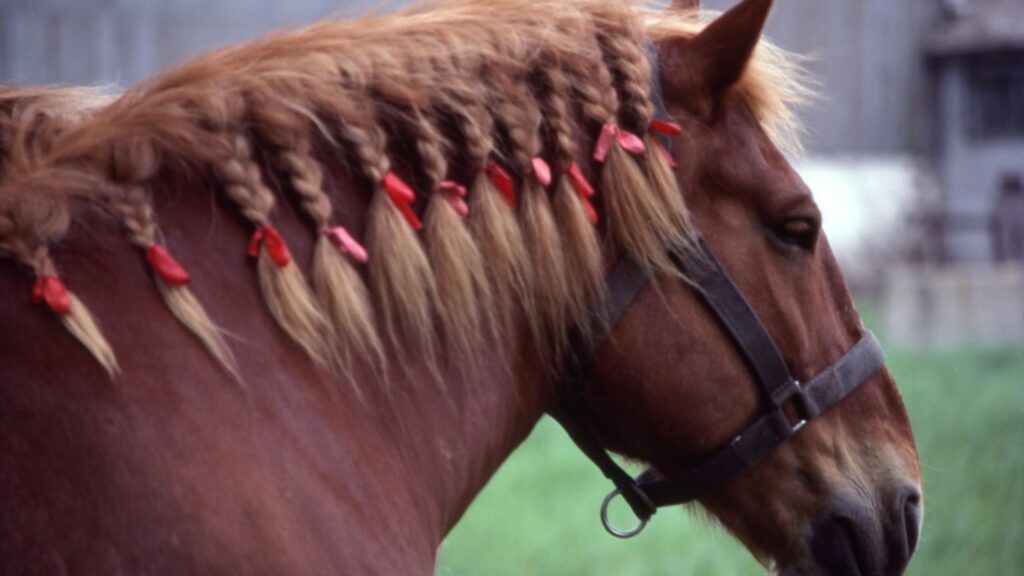
The concept of “appropriate technology”—using the right tool for the specific context rather than defaulting to the most advanced option—finds perfect expression in today’s draft horse renaissance. For small-scale diverse vegetable operations of 1-10 acres, horses offer precisely calibrated power without the overkill of equipment designed for industrial monoculture. Market gardeners particularly appreciate the maneuverability of horses in tight spaces between permanent beds or in high-tunnel systems where exhaust fumes would be problematic. Draft horses excel in challenging terrains like steep hillsides, wet areas, or locations with irregular field shapes that prove difficult for conventional machinery. Different horse breeds and team configurations allow farmers to match their animal power precisely to their land base and production needs, creating efficiencies impossible with the limited options of standardized machinery. This tailored approach exemplifies sustainable thinking by avoiding energy waste and minimizing environmental impacts while maximizing productive capacity.
Physical and Mental Health Benefits
Working with draft horses creates unique health benefits for farmers that contribute significantly to sustainable agricultural livelihoods. The physical activity involved in harnessing, driving, and caring for working horses provides consistent moderate exercise distributed throughout the day, contrasting favorably with the sedentary nature of tractor operation followed by intense manual labor that characterizes many conventional farming patterns. Research into agricultural occupational health suggests this more balanced physical activity may reduce the musculoskeletal injuries and chronic pain issues common among farmers. Perhaps even more significant are the psychological benefits reported by draft horse teamsters, who describe the profound mindfulness practice inherent in working closely with sensitive, powerful animals. The necessary attention to the present moment, clear communication, and partnership with another species creates what many describe as a meditative state that reduces stress and increases job satisfaction. In an occupation with concerning mental health statistics, these psychological advantages may prove as valuable as any ecological benefit.
Training and Managing Draft Horses
Successfully integrating draft horses into a modern farming operation requires specific knowledge and systems quite different from recreational horse keeping. Draft horses need consistent work to maintain physical conditioning and mental stimulation, ideally following a schedule that provides regular activity throughout the year. Training typically begins around age two or three, with young horses learning first to ground drive before gradually being introduced to light work alongside experienced team members. Effective training emphasizes clear voice commands, consistent expectations, and relationship-building rather than domination techniques. Nutritional management balances the horses’ energy requirements during heavy workloads with maintaining appropriate body condition during less active periods. Housing systems for working horses prioritize adequate shelter, safe fencing, and sufficient space for movement and social interaction, with many farmers preferring group housing that allows natural herd behaviors. The investment in proper training and management pays dividends through safer work environments and horses that remain productive for two decades or more.
Market and Consumer Connections
The story of draft horses resonates powerfully with consumers increasingly concerned about how their food is produced. Farms utilizing draft power often develop premium marketing channels that command higher prices based on their ecological narrative and animal welfare practices. Innovative horse-powered operations have successfully branded themselves as truly sustainable alternatives to conventional agriculture, often sharing images and stories of their working horses through social media and farm visits that create emotional connections with customers. Research into consumer preferences shows growing segments willing to pay premium prices for food produced with explicit ecological benefits, which horse-powered farms can clearly demonstrate. Community Supported Agriculture (CSA) programs and direct-market relationships particularly flourish around horse-powered farms, as the transparency of their production methods builds trust with ethical consumers. This marketing advantage creates economic sustainability that complements the ecological benefits, making draft horse farming viable in contemporary food systems.
The Future of Draft Horses in Sustainable Agriculture
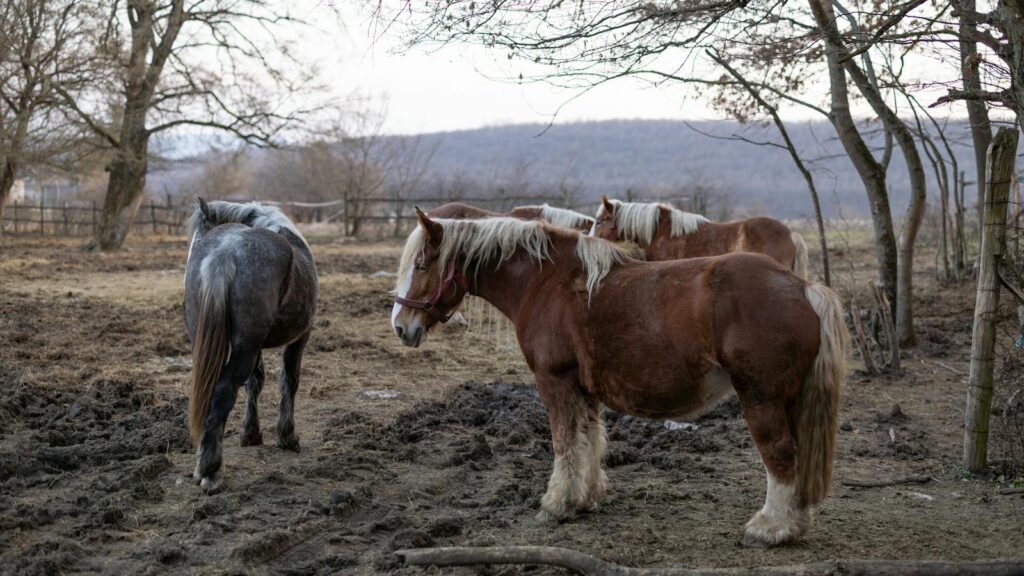
Looking forward, draft horses appear positioned for continued growth within the sustainable agriculture movement, though likely remaining a specialized rather than dominant approach. Agricultural education programs are increasingly incorporating draft animal options into their curriculum, recognizing their legitimate place in the spectrum of production methods. Innovation continues in the development of modern horse-drawn equipment, with engineering improvements and material advances making these tools increasingly effective. Climate change considerations may accelerate interest in horse power as carbon taxes, fuel restrictions, and extreme weather events challenge conventional systems. Younger farmers, particularly those without multigenerational access to land and capital, often find the lower startup costs and scaled approach of horse-powered farming more accessible than heavily mechanized alternatives. As sustainable agriculture continues evolving beyond simple organic certification toward truly regenerative systems, draft horses offer a proven power source aligned with the deepest ecological principles—one that worked for thousands of years and may well continue working for thousands more.
Conclusion
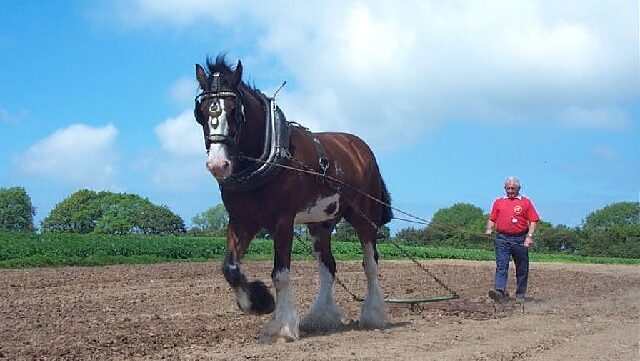
The resurgence of draft horses in modern sustainable farming represents far more than nostalgic yearning for a simpler past. Instead, it reflects a thoughtful recalibration of agricultural methods that prioritizes ecological health, economic resilience, and human wellbeing. These magnificent animals offer contemporary farmers a genuine alternative power source that addresses many of conventional agriculture’s most pressing challenges—from carbon emissions and soil degradation to economic vulnerability and disconnection from natural systems. While draft horses won’t replace all farm machinery in our complex food systems, their growing presence signals an important diversification of approaches, creating agricultural models that work with rather than against natural processes. As we face the mounting challenges of climate change and resource depletion, the steady hoofbeats of draft horses pulling modern implements across fertile fields may well represent not agriculture’s past, but one of its most promising sustainable futures.

